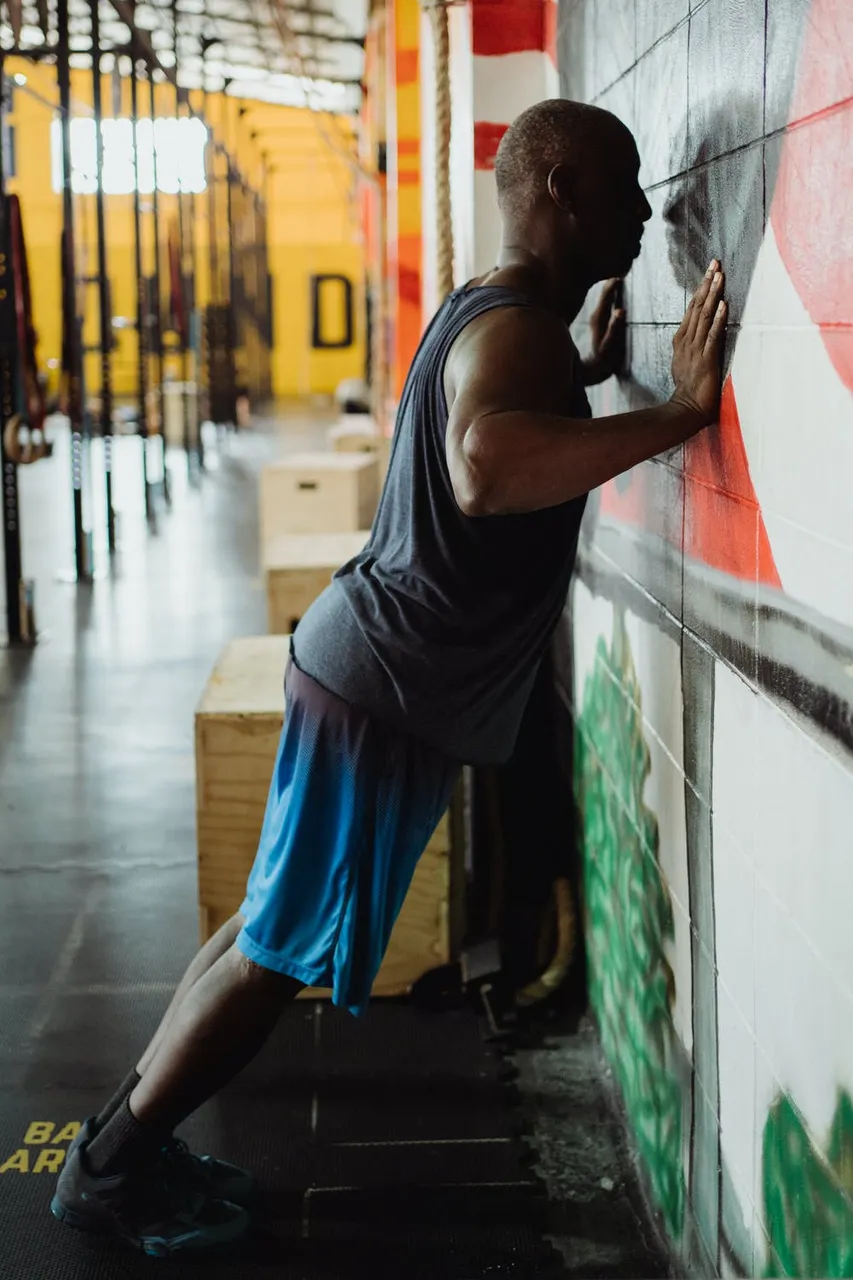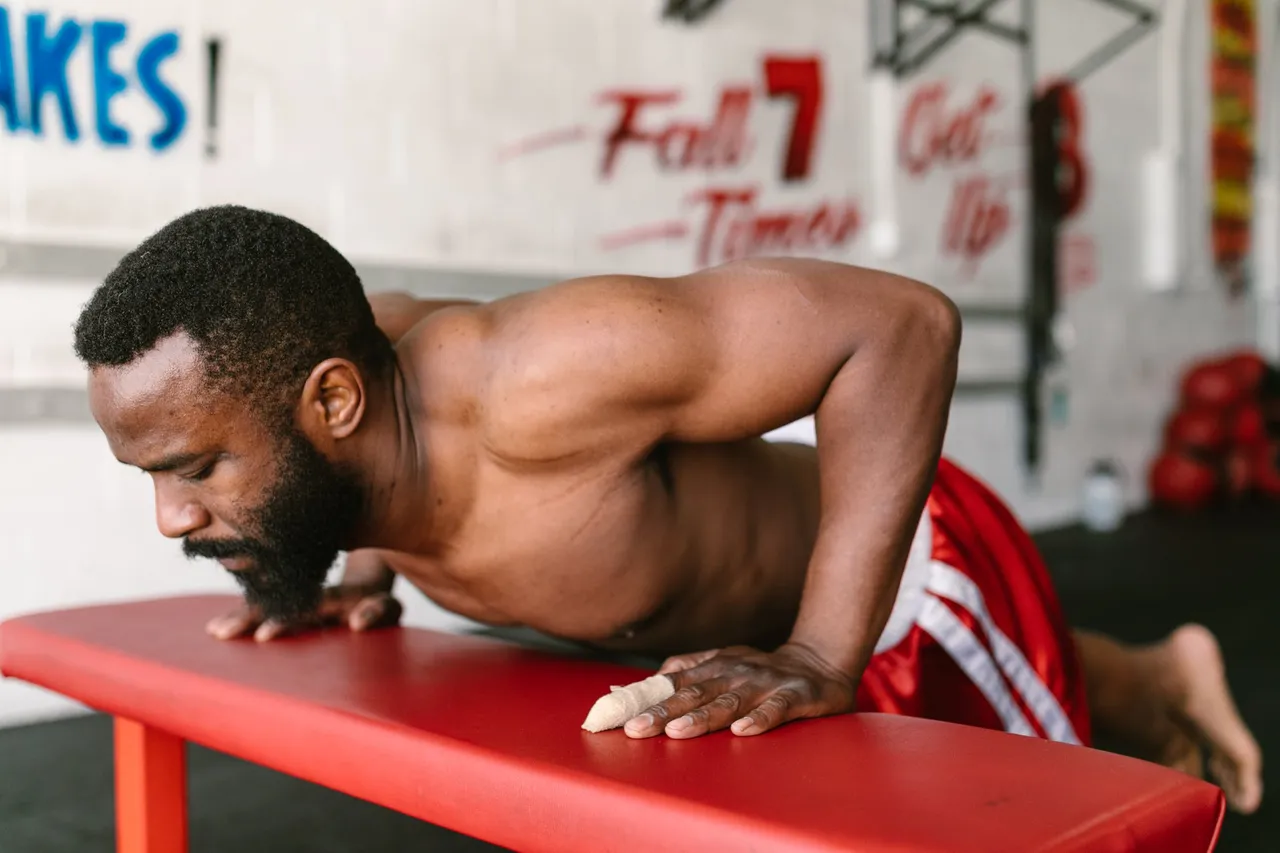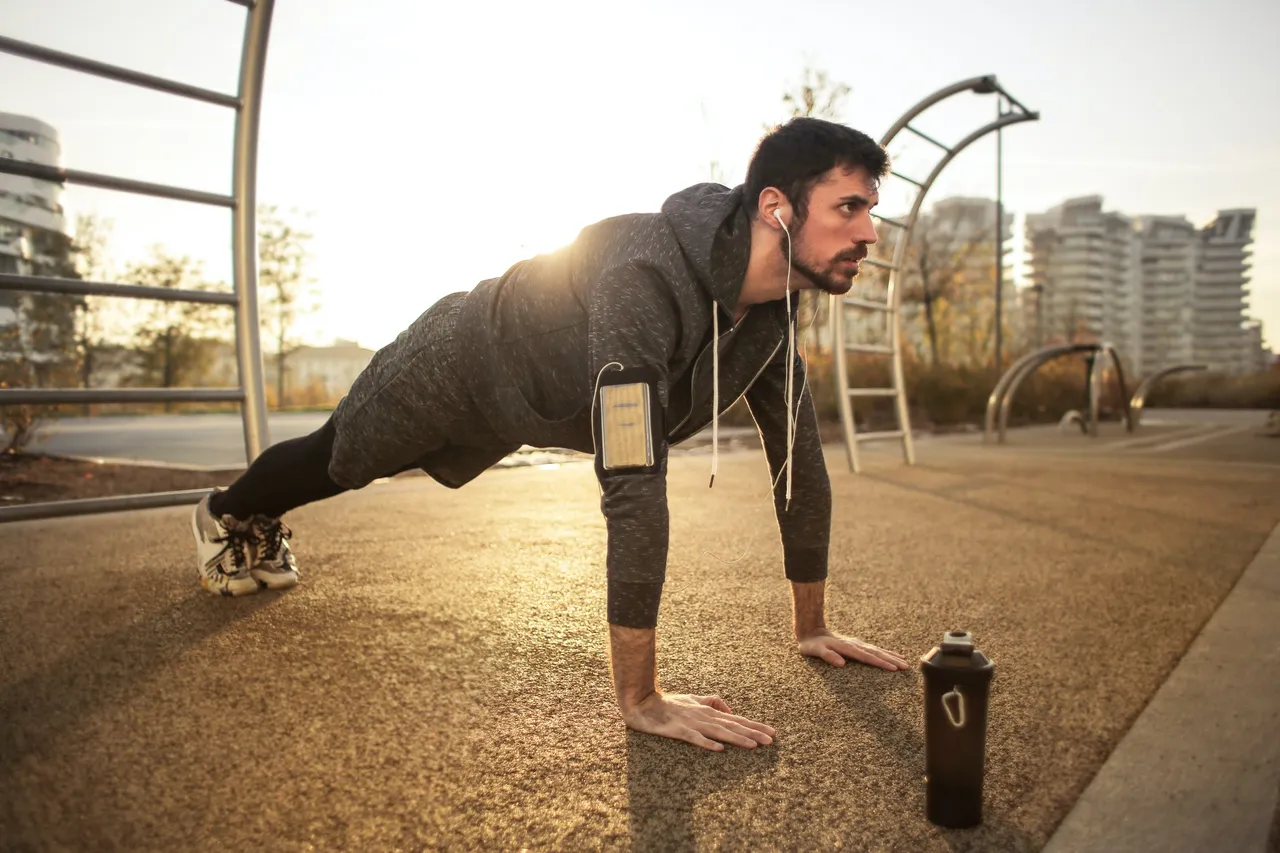How much of your weight is lifted in a push up? More importantly, what kind of push up progression should you follow? Let's talk about it.

Push Ups are a common and important exercise in nearly any well written workout program. Regardless of your goal, push ups are so effective, so versatile, and so accessible that everyone should get proficient with them.
But most of the people I’ve trained over the years start their fitness journey unable to do a single push up. This is quite common regardless of age, training experience, or gender. A proper push up is challenging.
The default choice of exercise if a push up isn’t possible is typically the kneeling push up. This is my least favorite push up variation to program to help people build up to a push up for many reasons.
How much of your bodyweight do you lift in a push up?
At the key of the progression question is the matter of how much of your body weight is lifted in a push up.
In this study, it was determined that the following push up positions result in lifting a certain percentage of body weight.
- Hands Elevated 60 cm: 41%
- Kneeling Push Up: 49%
- Hands Elevated 30 cm: 55%
- Standard Push Up: 64%
- Feet Elevated 30 cm: 70%
- Feet Elevated 60 cm: 74%
NOTE: These percentages were found to be independent of gender or height. In other words, this is fairly accurate and consistent across all genders and heights included in the study
So we have a progression here where we are adding 8%, 6%, 9%, 6%, and 4% with each progression.
Now, if you’re starting with kneeling push ups, you’re already lifting nearly half of your bodyweight. This is a challenge for many people. And it’s one of the reasons that kneeling push ups are one of the exercises I see performed incorrectly most frequently.
Top it off with the fact that if you are progressing from knees to toes, you’re increasing by adding 15% of your bodyweight with one progression.
Why do these percentages matter?
How a good program is written.
In a good strength training program it’s common to progress the difficulty of an exercise in increments of 5% or less. With barbells, this is easy. A 100# bench press becomes 105#. This is proper.
For a 200 pound person, progressing from kneeling to toe push ups is akin to moving from a 100 pound bench press to a 125# bench press. That’s a hell of a jump. And it’s bad programming.
Top it off with the fact that the demands on the core, hips, and thighs are different between knee and toe push ups and we’re not really even comparing apples to apples.
Clearly, starting with knee push ups and progressing to toe push ups is not the best way. I program them, but I consider them a separate exercise outside of push up progression for these reasons.
So, how do we progress?
The best way to progress your push up is to start on your toes, doing push ups for the reps required in your program from a height where you can struggle, but succeed, for the reps indicated.
As you go stronger, that same amount of reps will feel relatively easier. Then lower your hand position by about 20 centimeters and continue your workouts until you need a greater challenge. Then lower again. Use whatever combination of sturdy countertops, tables, chairs, stools, steps, suspension trainers, or adjustable height bars you have available at your home, gym, or other training area. Skip the knee push ups.
20 centimeters will keep the progression at or below 5% depending on your height and where you carry your weight.
Doing push ups from the toes with your hands at different heights also keeps the same, but increasing, stress on your core, hips and thighs. This is important for keeping the trained movement pattern similar, accelerating progress, and keeping you from looking like a weirdo who likes humping floors.
Set a goal
In time, you can do a push up from the toes on the floor. And this is a primary goal that EVERYONE should have in their program UNLESS medically contraindicated. The ability to do push ups from the floor is so intimately tied to longevity, quality of life, fat loss, strength, bone density, and athletic goals that this one is important.
Set a goal to achieve this. It may take up to a year (if it takes longer than that, either your program sucks, or you’re not following it correctly, or you don’t have a program.)
Struggle with push ups? Drop a comment below and tell me about it. If I can help, I’m glad to do so.
Did you find this post useful or informative? I'd be grateful for an upvote and a follow. I am a genderfluid personal trainer with more than a decade of coaching experience who has owned 2 gyms (once voted best in my city), and coached myself and others to multiple powerlifting records. I'm also a nerd and I post about Fitness, Food, Gaming, Crypto, Lifestyle, and LGBTQ issues. (yeah, it's a mixed bag)




